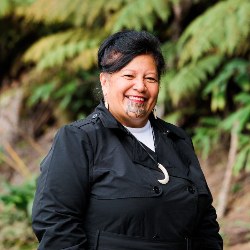How to increase Māori suicide rates
How to increase Māori suicide rates
Each year when the Chief coroner releases our country’s latest annual suicide statistics, they are met with an outcry. This year is no different. Judge Neil MacLean yesterday reported that in the period from July 2011 to June 2012, New Zealand’s reputation as having some of the worst suicide rates in the world, strengthened. The latest statistics reveal more youth and more Māori claiming their lives than ever. MacLean, and others who work in the area of suicide, recognise there is no clear answer as to what is behind this disturbing trend. Yet, once again, the idea that tangihanga may be somehow contributing to the suicides, is raised.
Last year I responded publically to Māori Party MP Te Ururoa Flavell’s ill-informed views surrounding how we ‘deal with’ suicide within our whānau (‘Pull your head in Te Ururoa’, Scoop, Wednesday, 27 July 2011, 4:42 pm). The suggestion that those who suicide should be denied tangi and buried outside urupa (cemeteries), or in their entrances so that others may ‘walk over them’, as a deterrent to others who are suicidal, is as preposterous as this year’s suggestions that haka may be glamorising suicide.
Support offered to those who are suicidally-bereaved is absolutely crucial in their recovery from the trauma of suicide. To deny suicidally-bereaved whānau the right to farewell their loved one through tangihanga will not address the underlying issues of loss that so often precede suicide. Rather it will simply result in more death as those most vulnerable face societal perceptions of suicide face-on whilst combatting intense grief. A recipe for disaster. Stigmatisation of those who make this tragic decision, and those they leave behind, lacks insight and is fatal.
Strong words? Yes. But true.
The answer does not lie in punishment. The answer lays in
support.
ends


 Gordon Campbell: On Iran Killing Its Rappers, And Searching For The Invisible Dr. Reti
Gordon Campbell: On Iran Killing Its Rappers, And Searching For The Invisible Dr. Reti Government: Saves Access To Medicines
Government: Saves Access To Medicines Office of the Speaker: Law And Order, Finance, And Defence A Focus For Ukrainian Parliamentary Delegation To NZ
Office of the Speaker: Law And Order, Finance, And Defence A Focus For Ukrainian Parliamentary Delegation To NZ Environmental Defence Society: Fast-track Approvals Bill Presents A Serious Risk To New Zealand Exporters
Environmental Defence Society: Fast-track Approvals Bill Presents A Serious Risk To New Zealand Exporters NZ Government: New Lab To Help Protect Key Pacific Tuna Fisheries
NZ Government: New Lab To Help Protect Key Pacific Tuna Fisheries Susan Botting - Local Democracy Reporter: Ruawai Leader Slams Kaipara Council In Battle Over $400k Property
Susan Botting - Local Democracy Reporter: Ruawai Leader Slams Kaipara Council In Battle Over $400k Property Te Pati Maori: Another ‘Stolen Generation’ Enabled By Court Ruling On Waitangi Tribunal Summons
Te Pati Maori: Another ‘Stolen Generation’ Enabled By Court Ruling On Waitangi Tribunal Summons


